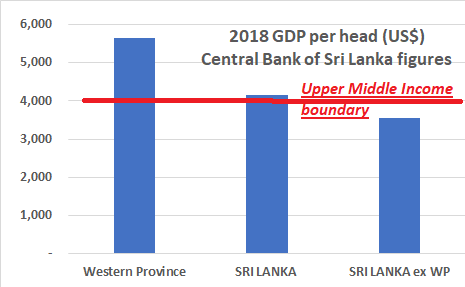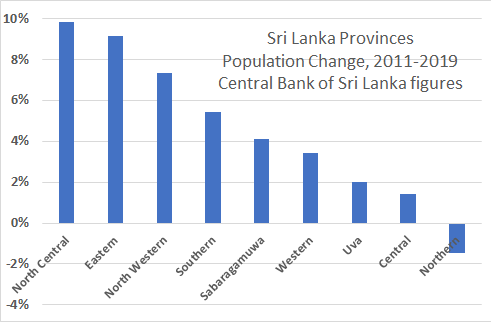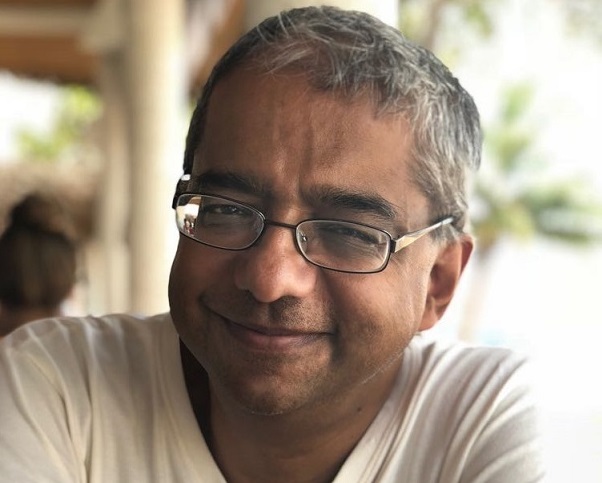By Jekhan Aruliah
A few years ago I was speaking with a main board director of one of Sri Lanka’s largest companies. I asked him, a Jaffna Tamil gentleman approaching retirement, why his company still had not invested in the North several years after the war had ended. What he said put simply is there were easier places for his company to make money than the North. Nothing wrong with that. Directors of publicly quoted companies are responsible to their shareholders, not to their own conscience or emotions.
He was right then and still is right, the North isn’t the easiest place to make money. The North will only become an easy place to make money, when people who want to make the North rich more than they want to make themselves rich have invested and created that change.
I write about the North because that’s where I am and what I know. But what I say in this article surely applies to other poor provinces in Sri Lanka. Those provinces also need well targeted carefully given, carefully received, and carefully used investment.
Sri Lanka was briefly promoted up in 2019 from ‘lower middle income’ to ‘upper middle income’ and then demoted back down a year later in 2020 to ‘lower middle income’ status. However, our pretensions to prosperity are built on the Western Province. Exclude the Western Province, the rest of our country remains stubbornly poor.

I get contacted by Diaspora asking me how they can invest in the North because their primary objective is not to make money for themselves. Their primary objective is to create opportunities and make money for the Northern people. And to support them until they can create opportunities for themselves and attract investors whose prime objective is to make money for themselves. I believe there are people with similar goodwill for the other poor provinces, so what I am writing applies to them too.
The problem with most of the enquiries I receive is they have not been thought through. Most are driven by the laudable desire to “DO SOMETHING” to help the people. The Northern Province is a region that has stagnated after decades of civil war and more than a decade after the war. Central Bank of Sri Lanka figures for 2018 show the Northern Province is the poorest (measured by GDP), and the Northern people are second poorest only above the people of the Eastern Province (measured by GDP per person).

Messages I get from interested investors are similar to these:
Donating money: “Someone in Norway is interested in helping and has allocated 10 thousand dollars. Do you have any thoughts or ideas.”
Investing money: “One of my Accountant friends in the U.K.is keen for investments in ongoing Sri Lankan export operations. Anything interesting in the North?”
Donating time and skill: “I noticed you are trying to enhance the level of our younger generation. If you need any assistance I can volunteer to educate our intelligent students to improve their skills and education”.
Investing an asset: “I have acres of uncultivated land. Do you know someone I can partner with to do something there?”
I am very reluctant to give advice based on so little information, so I ask for more detail. Not because it would be hard to find those who would accept these investments. Giving things for free is easy. If it is free there will be no shortage of takers. Free money, free laptops, free land, free machinery, free training will all be snapped up.
There are enough people who will not think twice because there is no cost to them. I know of prime land donated left neglected, machinery gifted left to rust, free training given for the skills to be left unused and forgotten. Sadly, things that are given for free are often not valued. A coconut oil factory values the Rs5k wheelbarrow they paid for more than the Rs500k machine they got for free from a donor.
What is carelessly given is carelessly received. Those who want to invest or donate must take care and put thought into their intentions, to place their generosity where it will be carefully received and achieves the intended results.
This article suggests questions the investor/donor should think about when planning investment and donations. I include donations when I say “investments”, as these too are investments expecting no financial return.
1) Why do you want to invest?
a. To make a charitable donation for the recipient to spend however they want.
b. To create a memorial to a loved one.
c. To increase a supplier’s production/quality so you can buy their product.
d. To own an asset, perhaps a piece of land, and make it productive.
e. To build overall Northern capability, capacity, and quality.
f. To become a shareholder, active or passive, in a Northern business.
Etc.
2) How do you want to invest? And how much?
a. By making a donation and walking away.
b. By making a loan at low, or zero, interest. Or with no requirement for collateral. Providing loans to someone banks won’t lend to on reasonable terms, or won’t lend to at all.
c. By buying and owning an asset, and allowing someone else to use it: [Agricultural land leased to a farmer; a large house leased to a restaurateur; a small car leased to a taxi driver].
d. By making an equity investment. Patiently waiting, perhaps for many years perhaps forever, for dividends and capital growth.
e. By making an equity investment with the explicit intention of receiving dividends, and realizing capital growth within a stated exit timeframe.
Etc.
3) What is the Outcome you want to create? And how will you measure the outcome?
a. Create jobs: e.g. invest in a factory, and count the number of employees one year later.
b. Increase income: e.g. donate 100 chicks to a rural family, see the additional income when they sell the grown chicken and eggs.
c. Improve health: e.g. fund a clean water supply and see reduction in water related diseases.
d. Support entrepreneurs: e.g. invest in a cake delivery business to buy a bigger oven. See increase in sales.
Etc.
4) Who do you want to benefit?
a. Rural communities.
b. Women headed families.
c Young people.
d. War affected people.
e. Cooperatives.
f. Entrepreneurs.
Etc.
5) Where?
a. Specific village.
b. Specific district.
c. Specific community.
Etc.
6) What sector?
a. Agriculture.
b. Fisheries.
c. Food production.
d. ICT.
e. Education.
f. Healthcare.
g. Tourism.
Etc.
7) Investment Focus
a. Technology & Methods: [New crop variety; Drip irrigation; etc].
b. Training/Education: [English; Plumbing; Irrigation; etc].
c. Land & Buildings.
d. Machinery.
e. Working capital.
etc.
While you don’t need to answer all these questions upfront, you must at least have answers for (1) Why you want to invest; (2) How and how much you want to invest; (3) What is the outcome you want to achieve.
Making the investment isn’t the end of it. You should take the trouble to see if the outcomes you desired were achieved. You should learn how they could have been achieved better, and allow others to learn from your experience.
From what I have seen it is rare even for the larger charities and institutional donors to take a look a year after the donation to see what the impact has been and whether the intended outcome was achieved. Where they do these reviews they rarely make them public, perhaps embarrassed by their shortcomings. So lessons are rarely spread to others from their experiences. That even larger donor organisations are failing to do this and disseminate impact and lessons learned reviews is disappointing.
What they should do to learn from experience at a minimum:
a) 12 months afterward the investment review what went well, what could have gone better, what went wrong.
b) Learn your lessons, and make your lessons available for others to learn from.
A lot of Investment and donations into the North are wasted. Lessons are not being learned. How do we know this? Because the North, more than a decade after the end of the Sri Lankan Civil War, still languishes at the bottom of the nation’s economic tables. This is inspite of the fact that the North has an economically powerful Diaspora that has risen high around the World. We know opportunities for the North are wasted because it is the only province in Sri Lanka where the population is actually falling as people leave to find better opportunities elsewhere. People fled during the war, and continue to flee even now.

( — The writer Jekhan Aruliah was born in Sri Lanka and moved with his family to the UK when he was two years of age. Brought up in London, he graduated from Cambridge University in 1986 with a degree in Natural Sciences. Jekhan then spent over two decades in the IT industry, for half of which he was managing offshore software development for British companies in Colombo and in Gurgaon (India). In 2015 Jekhan decided to move to Jaffna where he is now involved in social and economic projects. He can be contacted at jekhanaruliah@gmail.com — )

